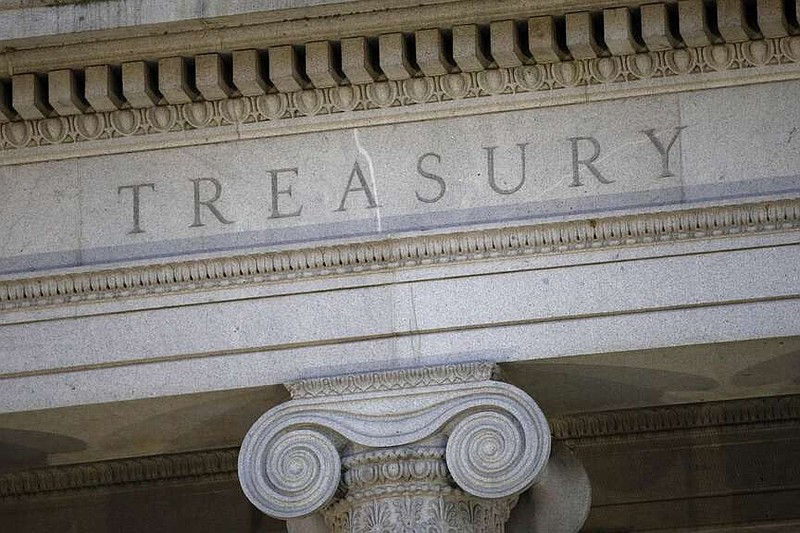WASHINGTON -- The federal government's gross national debt has surpassed $34 trillion, a record high that foreshadows the coming political and economic challenges to improve America's balance sheet in the coming years.
The U.S. Treasury Department issued a report Tuesday logging U.S. finances, which have become a source of tension in a politically divided Washington that could possibly see parts of the government shut down without an annual budget in place.
Republican lawmakers and the White House agreed last June to temporarily lift the nation's debt limit, staving off the risk of what would be a historic default. That agreement lasts until January 2025.
The national debt officially eclipsed $34 trillion on Friday, several years sooner than pre-pandemic projections. The Congressional Budget Office's January 2020 projections had gross federal debt eclipsing $34 trillion in fiscal year 2029.
The debt grew faster than expected because of a multi-year pandemic starting in 2020 that shut down much of the U.S. economy. The government borrowed heavily under then-president Donald Trump and current President Joe Biden to stabilize the economy and support a recovery. But the rebound came with a surge of inflation that pushed up interest rates and made it more expensive for the government to service its debts.
"So far, Washington has been spending money as if we had unlimited resources," said Sung Won Sohn, an economics professor at Loyola Marymount University. "But the bottom line is there is no free lunch," he said, "and I think the outlook is pretty grim."
The gross debt includes money that the government owes itself, so most policymakers rely on the total debt held by the public in assessing the government's finances. This lower figure -- $26.9 trillion -- is roughly equal in size to the U.S. gross domestic product.
Last June, the Congressional Budget Office estimated in its 30-year outlook that publicly held debt will be equal to a record 181% of American economic activity by 2053.
The national debt does not appear to be a weight on the U.S. economy right now, because investors are willing to lend the federal government money. This lending allows the government to keep spending on programs without having to raise taxes.
But the debt's path in the decades to come might put at risk national security and major programs, including Social Security and Medicare, which have become the most prominent drivers of forecast government spending over the next few decades. Government dysfunction, such as another debt limit showdown, could also be a financial risk if investors worry about lawmakers' willingness to repay the U.S. debt.
Foreign buyers of U.S. debt -- like China, Japan, South Korea and European nations -- have already cut down on their holdings of Treasury notes.
A Peterson Foundation analysis states that foreign holdings of U.S. debt peaked at 49% in 2011, but dropped to 30% by the end of 2022.
"Looking ahead, debt will continue to skyrocket as the Treasury expects to borrow nearly $1 trillion more by the end of March," said Peterson Foundation Chief Executive Officer Michael Peterson. "Adding trillion after trillion in debt year after year should be a flashing red warning sign to any policymaker who cares about the future of our country."
The debt equates to about $100,000 per person in the United States, but the sum so far has not appeared to threaten U.S. economic growth.
Instead, the risk is long term if the debt keeps rising to uncharted levels. Sohn said a higher debt load could put upward pressure on inflation and cause interest rates to remain elevated, which could also increase the cost of repaying the national debt.
And as the debt challenge evolves over time, choices may become more severe as the costs of Social Security, Medicare and Medicaid increasingly outstrip tax revenues.
When it could turn into a more dire situation is anyone's guess, says Shai Akabas, director of economic policy at the Bipartisan Policy Center, "but if and when that happens, it could mean very significant consequences that occur very quickly."
